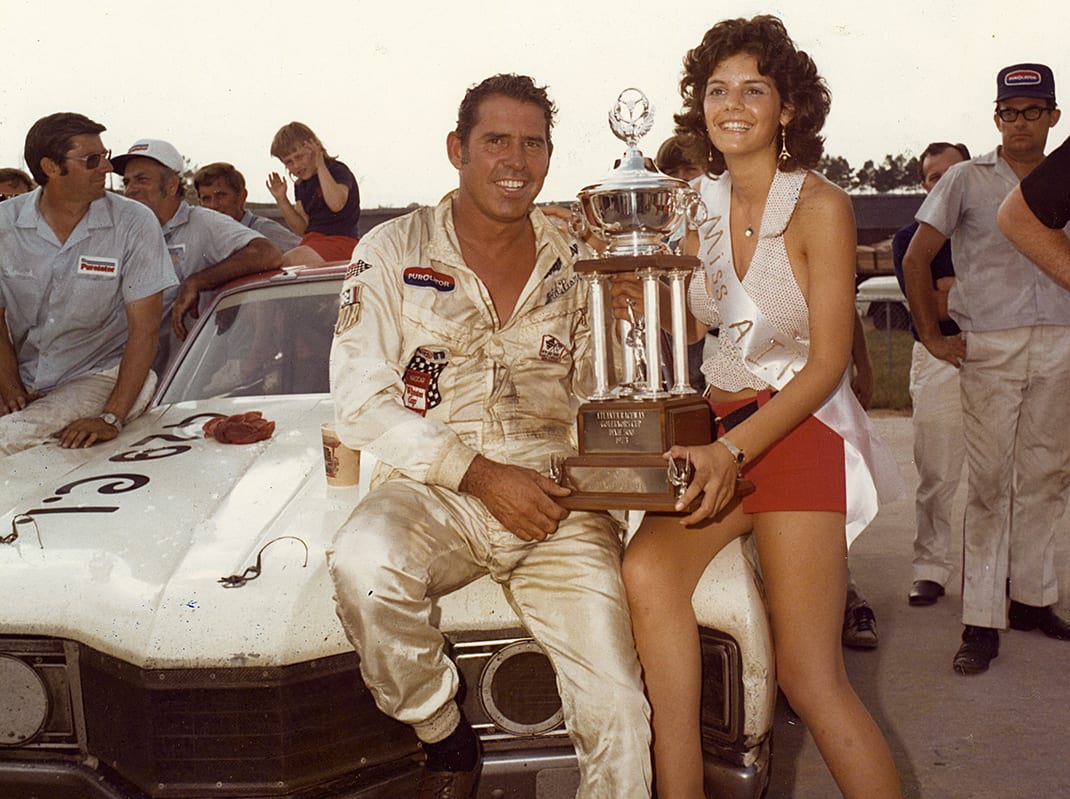During the 1973 season, NASCAR’s best drivers faced a relentless storm in the form of a maroon-and-white Mercury Cyclone fielded by Wood Brothers Racing with three-time Cup Series champion David Pearson at the wheel.
Team owner Glen Wood and crew chief Leonard Wood entered only 18 Cup Series races that season, winning 11.
One must look back to April 16, 1972, at Darlington (S.C.) Raceway to get the full story of how dominant the Pearson-Wood Brothers pairing was. Pearson started from the pole in the famed No. 21 Mercury and gave the Woods a win in the spring Rebel 400. Pearson’s talent, a perfectly handling car, leaf rear springs and a strong 429-cubic-inch hemi engine proved to be an unstoppable combination.
“David and I hit it off right from the start,” Leonard Wood said. “Sometimes it takes six months maybe to get on the same page. We won the first race he ran for us at Darlington in 1972, and it just clicked from then on.
“His style of driving made it so easy to set up the race car,” he added. “He would just back off the throttle at the right place and let it float into the corner and once it set, pick up the throttle at the right place and blow you away on the straightaway. He was such a great race car driver.”
The numbers from 1972 and ’73 are quite impressive.
In 38 starts during those two seasons, Pearson won 17 times for Wood Brothers Racing and A.J. Foyt added two more victories, including the 1972 Daytona 500.

The No. 21 car earned 15 poles and started second 15 times. Add five second-place finishes and four third-place efforts and the car finished in the top three 28 times.
Pearson even won at Martinsville (Va.) Speedway in 1973, a race the Wood Brothers team rarely entered during that era.
“In those days, we really didn’t have a lot of success at Martinsville because something would always go wrong for us there, for whatever reason,” said Eddie Wood, the eldest son of Glen and Bernice Wood. “I remember the feeling we all had after winning at Martinsville. We hadn’t done that since 1968 with Cale Yarborough driving for us. My dad (Glen) had some good runs there early on in the modifieds, but it was always a hard place for us.
“The whole time David drove for us (1972-’79), David and Leonard had a great relationship and everything was clicking,” Eddie Wood continued. “In 1973, the pit crew was really fast. If we got a little behind on the track, a lot of time was made up in the pits.”
Two of the principal players in the story are no longer with us. Pearson died on Nov. 12, 2018, at age 83 and Glen Wood passed at the age of 93 on Jan. 18, 2019.
What made that one 1971 Mercury Cyclone so dominant?
Leonard Wood, 85, still smiles when talking about that one special race car and driver.
“If you weren’t running good with Pearson, you might as well work on the car because it sure wasn’t him,” Leonard Wood said. “If he wasn’t saying anything, we knew we were all right. He was just a cool driver. He would say he didn’t need to practice but I would tell him, ‘You may not need to, but the car does.’ He was so much fun to work with it was unbelievable how good it worked. Any race we went to we knew we had a strong chance to win.”
When asked years ago why the car was so good, there was only one answer, according to Pearson.
“The driver, of course,” he said with a laugh during a 1992 interview for the American Racing Classics book series. “No, it was handling, horsepower, everything. We had it all. It was the best car I ever drove. It was just the right body style, a real low-slung car, everything.”
Click below to continue reading.
